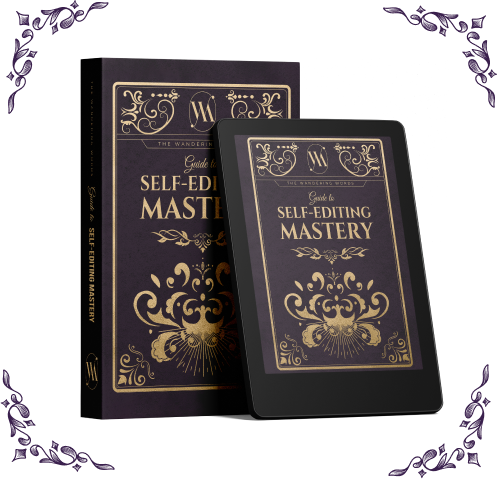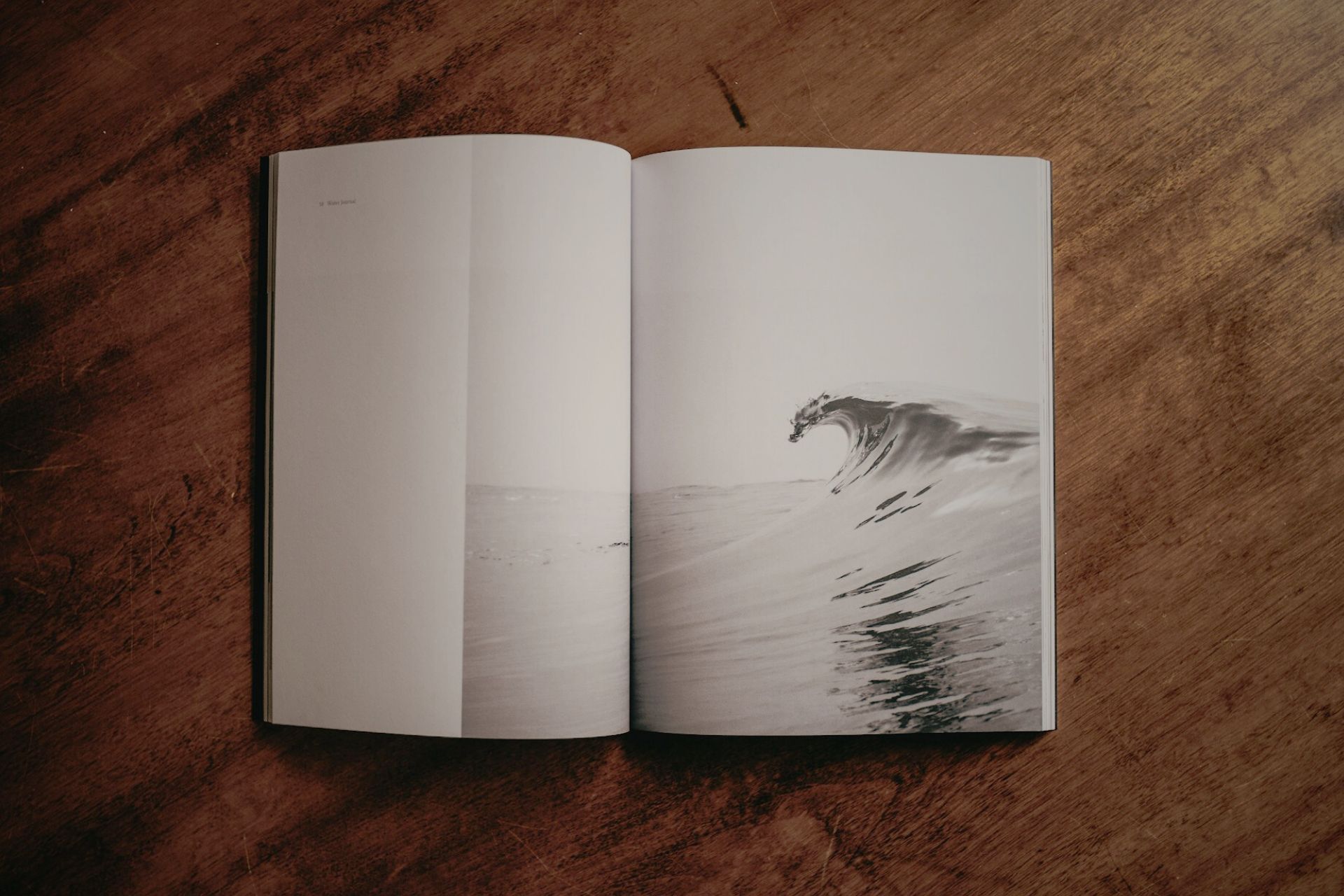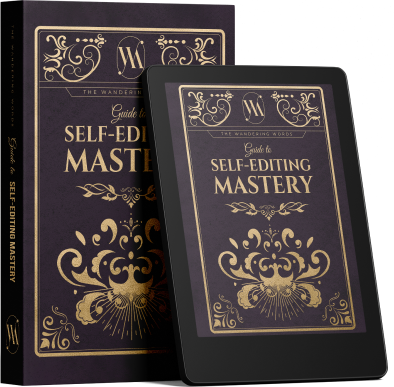Our Guide to Self-Editing Mastery has helped thousands of authors just like you:
- Pre-edit their books with ease
- Avoid the most common writing errors
- Quickly identify spelling & grammar mistakes
- Be more prepared for professional editing
Our Guide to Self-Editing Mastery has helped thousands of authors just like you:


“It sounds clunky.”
“I can’t put my finger on it, but it doesn’t read right.”
“It needs to flow better.”
Sheesh, everyone’s a critic, am I right? How can writing be “clunky?” Also, if they can’t put their finger on it, why even mention it—and what is “flow” supposed to mean, anyway?
I get your frustration, which is why I’m here to explain what flow is, as well as what you can do to make sure it exists within your writing.
The reader is a kayaker, and the words on your page are the river they travel down. Your goal is to get the reader’s kayak down the river without the reader falling out of their kayak and drowning (getting overwhelmed or confused), paddling upstream (having to reread parts for clarity), or stopping on the embankment (putting your book down and giving up entirely). To do this, we want to create logical, linear, and smooth transitions between statements—especially in fiction.

Let’s break this down into three components: logical, linear, and smooth.
Logical flow refers to whether or not the organization of events in your story makes sense. Here is a snippet of writing that shows poor logical flow:
Ally, having just returned from the Grocery Store of Wonder, began to put her new food items away. Her mutant kitten with blue and purple stripes had refused to eat the last bag of barf kibble she bought, so this time she bought a special grave-robber surprise blend—guaranteed to have the best protein money could buy—but that needed to be refrigerated. Reaching into her grocery bag she pulled out the canned goods from Twaddle & Twit’s Processed Foods, and the bag—in its desire to help—threw up a bottle of Mad Hatty’s Insanely Good Sauce.
“I don’t need that yet,” she told the bag. “Now, where are those Heart Throb Instant Noodles they were selling in spades?”
She sets the bottle aside, digs around a bit more and pulls out—her kitten’s new food? No, she didn’t need that yet either.
I think we can all agree that the content of this passage is a bit outlandish, but did anything stick out to you or seem out of place? Did anything appear more like a tangent than information pertinent to the story? If you think the remark about the kitten food in the first paragraph is a bit off—and not just in taste—then you would be correct.
Logical flow is all about spotting awkward details that don’t fit with the surrounding content, and fixing or nixing them. Here is a version of that same snippet with logical flow:
Ally, having just returned from the Grocery Store of Wonder, began to put her new food items away. Reaching into her grocery bag she pulled out the canned goods from Twaddle & Twit’s Processed Foods, and the bag—in its desire to help—threw up a bottle of Mad Hatty’s Insanely Good Sauce.
“I don’t need that yet,” she told the bag. “Now, where are those Heart Throb Instant Noodles they were selling in spades?”
She sets the bottle aside, digs around a bit more and … pulls out—her kitten’s new food? Her mutant kitten with blue and purple stripes had refused to eat the last bag of barf kibble she bought, so this time she bought a special grave-robber surprise blend—guaranteed to have the best protein money could buy—but that needed to be refrigerated. So no, she didn’t need that yet either.
With each paragraph, we learn of new items this odd grocery store has to offer, and the kayaker doesn’t have to paddle upstream to review previous moments for clarity. The logical flow in this version of the example brings our kayaker to new and refreshing scenes without them having to put in too much effort.
Linear flow refers to whether or not the organization of events occurs chronologically. Here is a snippet of writing that shows poor linear flow:
My dog jumped over the fence, after he ran down the stairs and out the back door again! When the mailman arrived, my dog barked and went to greet him. The mailman, rather than running from him, went to give him a pet and a milkbone.
When you read that, you probably visualized the above snippet not as it happened, but as it is written, which means in your head you saw the dog jump over the fence before he ran down the stairs, and you're probably not sure if he barked before he jumped the fence or after.
To create linear flow, we have to rearrange the sentences so that each sentence flows in a chronological fashion. Let’s try this:
When the mailman arrived, my dog barked and went to greet him. He ran down the stairs, out the back door, and then jumped over the fence—again! Thankfully, the mailman didn’t run from him, and instead he gave my dog a pet and a milkbone.
This correct version keeps our kayaker from not only having to paddle back up stream, but it also keeps them from having to attempt to do the hokey pokey while out on the river as they try to organize the order of events!
A narrative with a smooth flow contains sentences that are worded in such a fashion that they appear to have arrived on the page with little effort. However, just like circus performers who make the near impossible seem easy, the same can be said for the experienced writer: practice makes perfect.
A book on the shelf has been through a multitude of revisions, and its author had a word coach—also known as an editor—to help them along the way (usually, they have more than one editor!). First drafts, no matter who they belong to, are always rough drafts, and every writer—no matter how skilled—has to refine the edges of their work through a revision process.
To get to the level of these “circus performer” writers requires lots of practice, reading your work, rereading your work, taking in all the feedback you can get, and revising what you have on the page.
It requires asking yourself constructive questions about your work, like:
Don’t be upset or beat yourself up over the answers you may get. Instead, consider them, try to incorporate some more flow, see which version of your writing you like better, and grow from the experience.
Creating flow through the written word is about providing the reader with smooth sequencing that makes logical sense. Therefore, the objective of flow isn’t just about making your work sound as though it is rolling off the tip of the reader’s tongue; it’s also about engaging the reader in a way that allows them to have a more immersive experience through your writing voice.
By practicing these tips, you’ll create an enjoyable kayaking experience for everyone!
~Emma

